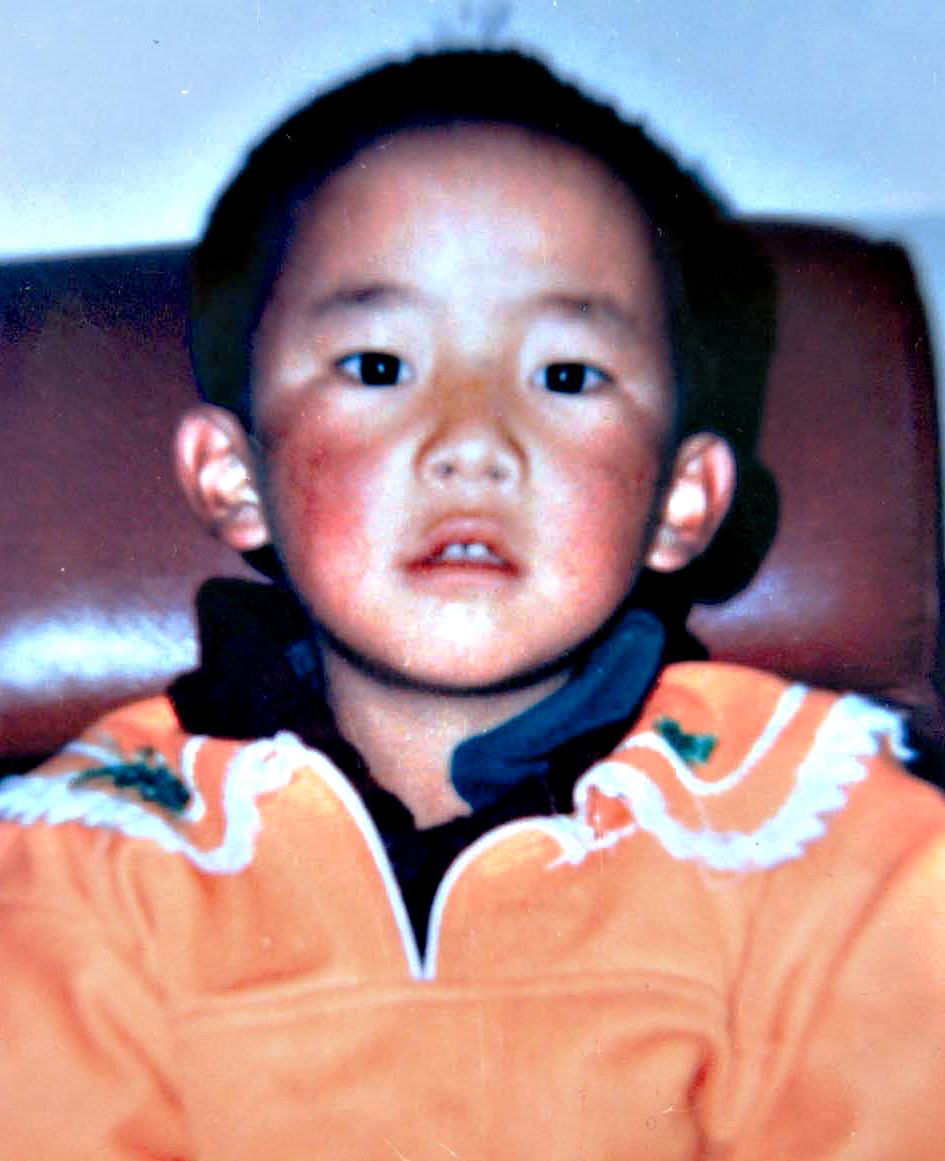
The 11th Panchen Lama, Gedhun Choekyi Nyima, was secretly removed from his home in May 1995.
TCHRD releases report on enforced disappearances in Tibet
“This heinous practice is not permitted under any circumstances. No exceptional circumstances whatsoever may be invoked to justify an enforced disappearance.” Jeremy Sarkin, UN Working Group on Enforced or Involuntary Disappearances (Nov. 2011) [TCHRD]
Imagine a close loved one being taken into custody, held incommunicado for days, weeks, or even years, without any contact or communication with you or other family members. Imagine the mental anguish and torment of not knowing where they are, if they are being tortured or have been killed. In this respect, enforced disappearances have a “doubly paralyzing impact,” not only on the victims, but also on their loved ones who live in a constant state of anxiety and fear about the fate of the disappeared person. Today, TCHRD, on the eve of the 98th session of the UN Working Group on Enforced and Involuntary Disappearances, releases an introductory report and analysis on enforced disappearances in Tibet. Enforced disappearance is a serious international crime that violates multiple human rights and fundamental freedoms enshrined in the Universal Declaration of Human Rights and other major international human rights instruments. Yet such disappearances are prevalent and commonplace for Tibetans living under Chinese rule. While there is a growing movement to ban enforced disappearances in any form or justification, the Chinese government has for the past many decades used enforced disappearances as a tool to suppress dissent and criticism, by disappearing and detaining incommunicado persons deemed threats to the PRC’s “unity” and “stability.” Security officers in Tibet, particularly the Public Security Bureau and the People’s Armed Police, use enforced disappearance to terrorize and intimidate the disappeared person, his or her family members, as well as the entire community. In 2008, TCHRD reported a surge in cases of enforced and involuntary disappearances following the outbreak of major protests across the Tibetan plateau. After a violent military crackdown in Tibet, TCHRD reported that at least one thousand Tibetans had disappeared, their whereabouts and well-being unknown to family members and affiliated monasteries at the time. To date, the Chinese government has refused to divulge any information on the exact number of arrests and detentions or how many it has sentenced to extrajudicial forms of detention, such as ‘Re-education Through Labour’ (Ch: Liaojiao).
The report also gives an analysis of a quintessential high-profile ‘disappearance’; that of Chadrel Rinpoche who ‘disappeared’ in May 1995 for allegedly ‘giving out the name of the boy who was supposed to be the 11th Panchen Lama before it was approved by the [Chinese] authorities.’ Rinpoche has been held in Chinese detention ever since, and in 2011, he was reported to have died under mysterious circumstances. Furthermore, official Chinese claims notwithstanding, the 11th Panchen Lama, Gedhun Choekyi Nyima, has also not been seen since he was secretly removed from his home in May 1995, nor have numerous appeals by the international community for specific information about his welfare and whereabouts been acknowledged.
During the March 2012 annual session, China’s parliament, the National People’s Congress (NPC), approved proposed amendments to its Criminal Procedure Law. These latest amendments fail to outlaw the persistent use of enforced disappearance as a tool to crack down on critics of official policies. Perhaps the most disturbing revision is embodied in Article 73, which essentially legalises the secret detention of persons charged with perceived political crimes.
Unfortunately, due to the Chinese censorship and oppressive lockdown in Tibet, we have not been able to obtain more information or testimonies in order to write a fuller, more detailed report. However, this report is a much-needed and important step in preserving and honouring the collective history and memory of the ‘disappeared’ Tibetans as well as the extended Tibetan community. In particular, it is aimed at informing the Tibetan community of the international legal standards on enforced disappearances.
This report considers the international legal standards that prohibit enforced disappearances, in particular the recent International Convention for the Protection of All Persons from Enforced Disappearance, and the relation between these laws and PRC’s practice of using enforced disappearance in Tibet. It concludes with crucial recommendations for the PRC, the United Nations Human Rights Council, and the international community to end the practice of enforced disappearance in Tibet. It is essential that the UN Working Group on Enforced and Involuntary Disappearances, who are due to meet tomorrow, make greater efforts to act on our recommendations. The widespread and systematic application of enforced disappearance constitutes a crime against humanity according to international law, and should be dealt with as such.
The 2012 Report is available in English and can be downloaded free-of-cost at TCHRD.org
Contact Persons:
For Tibetan, Tenzin Nyinjey (91) 98168-42395
For English, Tsering Tsomo (91) 98168-75856
Landline: (91) 1892-223363
Email: director@tchrd.org
http://tibet.net/